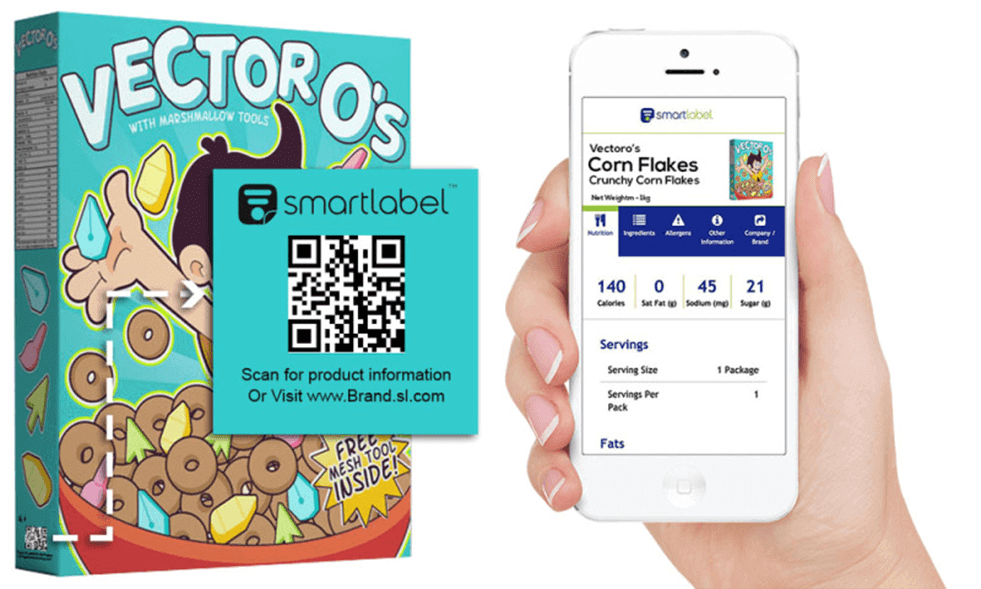Four Universal Principles of Change
The same principles used to change the consumer goods industry apply to new initiatives, big and small.

June 3, 2016
That is exactly what the Grocery Manufacturer’s Association (GMA) was able to accomplish over the course of a year by creating the SmartLabel platform.
It started with the GMA observing a consistent trend: consumers want to learn more about the products they are buying. But product packages are simply too small to communicate everything they want to know.
Although many brands were already sharing this type of information on their own websites, there was no unified platform that made the information accessible to consumers in a clear and authentic manner.
The solution to this problem was SmartLabel — a digital platform that brands can use to share all of a product’s information with consumers.

Uncovering four universal principles of change
Developing this solution was no easy task.
Creating industry-wide change with 80 brands is a complex process. To add to this challenge, the GMA was looking to launch SmartLabel within one year.
Our team at gravitytank learned something interesting while facilitating this successful effort. The principles and approach we used to change an industry are the same we use to drive new initiatives with smaller teams.
These principles apply to new initiatives of all shapes and sizes. Consider how they can help you influence change with your team, in your company, or in your industry.
“Perfection is the enemy of good”
1) Prioritize momentum over perfection
When you’re developing any new initiative, refinement will naturally come with time. But it can quickly become a roadblock if perfection is required at every step.
Developing SmartLabel with 300+ team members was an exercise in compromise. We knew there was no way to make everyone 100% happy with the solution.
Don’t aim for “perfect”, aim for “roughly right” (or “right enough to keep moving forward.”)
If the nitty-gritty details are holding your team back, take a minute to zoom out. Think past where you are right now and look ahead to what’s changing in the future.
We worked with the GMA to keep things moving with their members by focusing on the consumer as our north star. As long as we were making progress towards that, we were on the right track.
2) Focus on one challenge at a time
Creating change in a company or industry is complex because it requires input from many parties.
It’s easy to bite off more than you can chew.
Don’t try to solve for everything all at once! Be clear about what you’re working on, and the type of feedback you need to push it forward.
Working with 80+ companies and the GMA, we had to allow everyone’s voice to be heard while avoiding feedback paralysis. Focusing on one thing at a time turned what could have been utter chaos into a productive forum for all parties.
3) Articulate tasks and share responsibility
New initiatives need buy-in from numerous stakeholders. As a project gets larger, so does the number of people that need to be involved.
Simply put, you can’t create large-scale change by yourself. You need critical mass which requires involving others.
Provide team members with the autonomy to solve problems and the mechanism to share feedback along the way.
Clearly stating everyone’s roles, tasks, and responsibilities was essential to coordinating 300+ team members on the SmartLabel initiative.
It’s rare to work on a project that is the entire team’s full-time job. Everyone’s focus and attention is divided across multiple projects. Make it easy for everyone involved by dividing roles and responsibilities early on and being transparent about progress and next steps.
4) Prepare for a journey
Change doesn’t happen overnight. In fact, it often takes longer than we expect it to.
If you keep your eye on an overall goal, or “north star”, and maintain a positive attitude, the right pieces of the puzzle will come together over time.
We knew that Generation 1 of SmartLabel wouldn’t be perfect. But we believed that it would do something even more important: start the conversation around transparency.
SmartLabel wasn’t about launching a shiny new object. It was about building adoption and providing a digital pathway for consumers to access the information they were demanding about the products they use and buy every day.
Implement to learn
Growth will be an iterative process that challenges the industry to adapt and learn from all who have implemented and used the platform, and those who have yet to do so.
The first generation of SmartLabel launched in December 2015, and it continues to grow and build industry-wide adoption. Every month, more brands and products are signing up for the platform.
With these four principles at hand, and a focus on delivering a meaningful experience for consumers, we know that SmartLabel will only improve with time.




